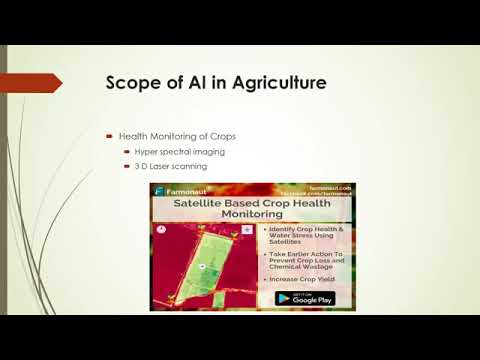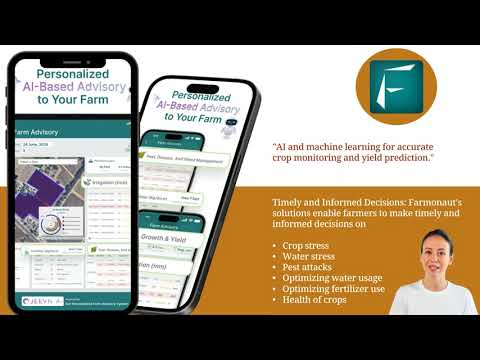Rural Homelessness in Colleton County: 5 Powerful Challenges in 2024
Introduction
Rural homelessness in South Carolina often exists in the shadow of urban discussions, but our communities in Colleton County face challenges that are just as pressing—and more hidden. As the fifth largest county in South Carolina by land and fourth largest by total area, Colleton’s vast agricultural landscape, historic presence, and tightly-knit community mask a growing crisis. In 2024, over 50 individuals were experiencing homelessness on any average night, as reported by the Lowcountry Continuum of Care, out of 404 individuals across the Lowcountry.
Our mission with this comprehensive guide is to shine light on the five powerful challenges driving rural homelessness in Colleton County and explore the essential resources, community support, and funding obstacles shaping services for homeless individuals today. We’ll highlight the remarkable work of agencies, faith-based organizations, and advocates like Amanda Herndon and Pastor Lawrence—while providing data, context, and scalable solutions anyone in the South Carolina region can draw from.
If we’re serious about equity, sustainability, and social care, every community member and organization, from agricultural innovators to humanitarian agencies, has a role to play in ensuring rural populations aren’t left behind. Let’s uncover the realities, bust the myths, and take positive action together.
Understanding Rural Homelessness in South Carolina
Rural homelessness in South Carolina is not as visible as what we see in cities, but it is equally urgent. In the Lowcountry, and especially the Colleton County area, the struggle often remains out of public view. The 2023 Lowcountry Continuum of Care reported more than 4,000 individuals experiencing homelessness across South Carolina, a number that grew in 2024. Unlike urban settings where we might see tents on sidewalks or clusters of people in parks, rural homelessness is “hidden”—people live in cars, abandoned buildings, woods, or cycle between temporary arrangements with friends or extended families.
This “invisible crisis” leads to under-representation in policymaking, underfunding for outreach services, and persistent stigma. We must shift the narrative to recognize that the homeless population in rural areas faces unique cycles of instability, poverty, and community misunderstanding.
Colleton County: A Rural Home Facing Hidden Homelessness
Our county stands out for its historic presence and large land area—encompassing over 38,000 residents amid agricultural fields and forests. Yet this rural landscape does not shelter all its residents equally. The faces of homelessness here, as described by Amanda Herndon, Executive Director at In His Name-Colleton, often remain unseen. Many are not the “sign on the roadside” individuals but people “trying to figure out how to navigate day by day.”
Data from the Lowcountry Continuum of Care shows that Colleton County regularly has over 50 homeless individuals each night. The region’s challenges are amplified by the scarcity of services for homeless individuals, funding for rural homeless services, and access to sustainable solutions.
While the county’s role as an agricultural and historic home is celebrated, we must recognize the overlooked crisis of hidden homelessness in rural communities and commit to building better support networks.
Profile of the Rural Homeless Population in Colleton
Who are the individuals facing homelessness in a county like ours? Many are dealing with addictions (to drugs or alcohol), disabilities that prevent work, estrangement from families, or abrupt economic setbacks. According to both Herndon and Pastor Newman Lawrence, who runs a winter shelter for homeless at St. Jude’s Church, the local homeless population includes youths as young as 18, middle-aged men, and those disabled due to health, injury, or mental health issues.
These individuals live precariously, cut off from stable employment and affordable housing. They face constant pressure from both the elements—particularly winter cold—and the negative stigma that still pervades much of rural South Carolina. Case managers describe a pattern: these people are not “choosing homelessness” out of mere preference or avoidance of work—they are struggling to survive amid systemic gaps in resources and community understanding.
A particularly critical issue is that our rural homeless populations are hidden. This means fewer accurate counts, less public awareness, and smaller shares of funding from state and federal sources—perpetuating a cycle of marginalization.
5 Powerful Challenges Facing Rural Homelessness in Colleton County in 2024
Let us examine not only the day-to-day struggles, but the larger, systemic hurdles—the five most formidable challenges that define rural homelessness in Colleton County this year.
1. Lack of Affordable Housing
Housing in rural areas like ours is sparse, and the supply of affordable rental properties or shelters has not kept pace with growing need. Homelessness prevention, permanent supportive housing, and rapid rehousing programs receive only a sliver of available funding, as counties including ours get pushed behind larger cities when grants are allocated. This leads to chronic instability, with families and individuals forced to cycle through temporary shelters, vehicles, or informal arrangements.
2. Limited Mental Health Services and Addiction Support
As reported by both Herndon and Lawrence, a significant number of rural homeless struggle not only with finances but also with addiction, mental illness, or disabilities. Unfortunately, mental health care and substance abuse support are too often based in distant urban hubs, leaving our neighbors trapped in cycles of crises. The community‘s perception of mental health issues can also be a barrier, further stigmatizing those in need.
3. Transportation Barriers
Colleton’s vast land area is a double-edged sword: distance makes it hard for anyone without steady transportation to access services, food, or job opportunities. Public transit is limited, and rural roads are not always safe for walking or biking, especially for individuals carrying all their possessions. This barrier is particularly acute for families or those dealing with mobility challenges due to disabilities.
4. Insufficient Emergency Shelters and Winter Warming Centers
The work of Pastor Lawrence and St. Jude’s Church’s winter shelter is critical but limited: their warming center can handle only 18 people at maximum capacity during a cold snap. At the same time, existing shelters—when available—may be temporary, underfunded, or overfilled in bad weather. Rural homeless populations are at dire risk during the winter months, with the possibility of frostbite or even death due to exposure.
5. Scarce Employment and Economic Opportunities
Strong agricultural roots do not always translate to employment for all. Many rural residents lack access to year-round, stable jobs, especially those facing homelessness. Employers may be wary of hiring people with unstable housing, and the lack of appropriate clothing or hygiene facilities can further hinder job searches. This economic cycle perpetuates rural homelessness in South Carolina.
Key Challenges and Estimated Impact Table
| Challenge | Estimated Number of Affected Individuals (2024) | Available Community Resources | Estimated Funding Gap (USD) | Resource Accessibility Rating (1–5) |
|---|---|---|---|---|
| Lack of Affordable Housing | 40–50 | 2 local agencies, temporary housing vouchers | $200,000–$250,000 | 2 |
| Limited Mental Health Services | 20–30 | 1 regional provider, church-run support | $100,000+ | 1 |
| Transportation Barriers | 35–45 | Limited shuttle, faith-based carpools | $75,000–$100,000 | 2 |
| Insufficient Emergency Shelters | 18–25 (in winter) | St. Jude’s warming center, one church | $60,000 | 2 |
| Scarce Employment Opportunities | 40–50 | 1 workforce center, part-time farm labor | $120,000 | 2 |
Vital Resources and Community Support in Colleton County
The path back to stability for the rural homeless in Colleton County depends on the strength of our local safety net. Organizations like In His Name-Colleton are at the forefront—offering food, hygiene, clothes, and case management support, though not full shelter. Their thrift store previously provided donated items and funded services—a crucial financial asset until building conditions forced closure, representing a major setback for 2024.
Faith communities continue to play an outsized role. The winter warming center at St. Jude’s Church, run by Pastor Lawrence, is one of the few places offering overnight safety when temperatures drop. Local agencies also work to connect the homeless to:
- Food and hygiene support for homeless – including regular meal programs and emergency supplies
- Transitional case management – helping with job search, ID recovery, and paperwork
- Disability and addiction support – although coverage is limited, some connections to county-wide and regional specialist programs exist
- Temporary housing assistance in South Carolina – including vouchers, though these are subject to availability and funding
Despite noble efforts, we as a community must be clear: the resources available in Colleton County do not meet the full need, especially given funding shortfalls and gaps in service coverage.
Funding Challenges in Rural Areas & The Roadblocks for Agencies
One of the clearest messages from both Herndon and Lawrence is that smaller communities like ours are often overlooked when state and federal resources are distributed—a problem that is systemic, not accidental. Funding for homeless services is typically granted by regions or centers. With larger cities receiving the lion’s share, the Lowcountry counties frequently find themselves at the “back of the line,” their needs minimized on the map by virtue of population density alone.
This leads to notable funding gaps in all areas:
- Emergency shelter beds (particularly in winter)
- Transitional and permanent housing development
- Case management and mental health/addiction services
- Community outreach and education (to address stigma and foster inclusion)
- Transportation for rural homeless individuals
Last year, In His Name-Colleton served 93 homeless clients, all while juggling declining financial assets and increased demand for resources. The closure of their thrift store—a previous community hub—highlights how fragile funding streams are for agencies working in rural support.
These are not just numbers—they are neighbors, children, veterans, and long-time residents fighting for the basic dignity of housing, food, and safety. Persistent setbacks can mean the difference between survival and catastrophe during a cold winter night.
Advocacy and local donations are more important than ever until structural funding returns equity to rural homeless populations. Our call to action extends to everyone: no one should be invisible because they live in the “wrong zip code.”
For the agricultural community, leveraging traceability technology not only builds stronger supply chains but provides transparency that benefits rural economies. Farmonaut’s traceability system ensures harvested produce or products from farms can be tracked end-to-end, increasing accountability and market access for South Carolina farmers and agribusinesses.
How Community Members and Organizations Can Help
We all share responsibility to ensure that every Colleton County resident—housed or unhoused—receives compassion and support. Here’s how we can contribute to solutions:
- Volunteer with local agencies (like In His Name-Colleton) to distribute meals, work clothing, or hygiene items.
- Advocate for equitable funding at city council, county meetings, or state advocacy events. Bring attention to how the map-based funding decisions hurt smaller community agencies.
- Donate essential supplies and financial assets directly to agencies or churches offering winter shelter for homeless and year-round case management.
- Educate peers to dispel myths about homelessness. Share that these are not “people who don’t want to work” but our neighbors caught in a cycle that lacks dignified exits.
- Support workforce development by advocating for job-training programs, inclusive hiring, or on-farm work opportunities to bridge the gap between agriculture and community needs.
Every bit of effort helps break down the hidden homelessness in rural communities and restore a sense of dignity and hope.
Rural communities can also lead on sustainability—by using carbon footprint tracking tools provided by Farmonaut, our area’s producers can demonstrate responsible practices and secure a competitive edge in growing green markets, benefitting both economic and social stability.
The Intersection: Agriculture, Technology & Social Advocacy
Colleton County’s agricultural base means our rural economy shares direct links with housing, employment, and food access for vulnerable populations. Innovative platforms like Farmonaut’s bring new hope to rural regions by making precision agriculture affordable and unlocking efficiency via satellite-based crop health monitoring, AI advisory systems, and blockchain traceability.
- Farm workers and at-risk families benefit when farm managers have real-time data for maximizing yields, reducing waste, and efficiently using the land—keeping more food and jobs in the county.
- Resource management tools cut irrigation or fertilizer costs, making farms more resilient to climate shocks and economic downturns that often lead to poverty and homelessness.
- Blockchain-based traceability increases transparency, giving rural producers a chance to access new markets and advocate for their unique challenges at state or national tables.
For all agencies, the intersection of agricultural innovation and social advocacy is a path toward a more resilient rural future—one in which no one is left outside or invisible.
To empower farmers and ensure sustainable income—which reduces economic vulnerability that can precipitate homelessness—download Farmonaut’s crop loan and insurance solution (crop loan and insurance platform). Satellite-based verification reduces fraud risk and accelerates access to credit for rural producers.
Farmonaut: Affordable Precision Agriculture as a Community Asset
Our mission stretches beyond human support to the systems that sustain us all. With Farmonaut’s approach, precision agriculture is made accessible and cost-effective for every scale—from smallholder fields in Walterboro to large-scale operations nearby. The platform offers:
- Satellite-based crop monitoring for early detection of threats
- Jeevn AI Advisory system for tailored agronomic advice
- Resource and fleet management for operational savings
- Carbon footprinting and sustainability tracking
- Transparency with blockchain-based product traceability
- Scalable, web-based and mobile app access—usable by farmers, agencies, cooperatives, and institutions
Expand farm capability while strengthening the overall backbone of our rural community.
Try Farmonaut for Yourself:
For customized integration with your own agricultural system or agency, access the Farmonaut API and Developer Docs.
For plantation or forest advisory tailored to our unique Carolina environment, visit the crop/plantation/forest management portal.
For managing large farms or cooperatives in Colleton or throughout South Carolina, Farmonaut provides scalable large-scale farm management software.
FAQ: Rural Homelessness in Colleton County
- What is rural homelessness and how is it different from urban homelessness?
- Rural homelessness is defined by the lack of permanent, safe, and adequate housing for individuals and families in non-urban areas. It’s often more “hidden” as people tend to live in cars, woods, or with friends rather than on the streets, making it difficult for relief agencies to identify and assist them.
- Why is Colleton County especially affected by homelessness in 2024?
- Colleton’s sprawling land, limited infrastructure, and lower funding allocations compared to cities combine to leave more people in need. Trends in 2024 point to an 18% increase in homelessness due to economic pressure, addiction, disabilities, and setbacks in funding for critical services.
- What vital resources are available for the homeless in Colleton County?
- The main resources include food, hygiene products, clothes, and case management offered through agencies like In His Name-Colleton, limited emergency winter shelter at St. Jude’s Church, and regional connections to health and addiction support.
- How can I help support rural homelessness advocacy in Colleton?
- Anyone can volunteer, donate money or goods, advocate for more equitable funding, or educate others about the realities rural homeless populations face. Supporting local agricultural and employment initiatives also helps strengthen the community’s resources.
- How is technology, like Farmonaut, relevant to rural homelessness?
- Modernizing agriculture through Farmonaut’s affordable, data-driven tools helps rural counties like Colleton grow more efficiently, create jobs, and protect resources—contributing to a stable, resilient local economy and reducing the risk factors for poverty and homelessness.
Conclusion
The crisis of rural homelessness in South Carolina, and particularly Colleton County, cannot be solved by aid alone but by systemic investment in housing, support services, economic opportunity, and sustainable agricultural innovation. Real change requires that we all—residents, organizations, agencies, and businesses—acknowledge rural realities, challenge our assumptions, and act with compassion and resolve.
Let’s ensure that, as Colleton County continues its proud tradition as an agricultural and historic home, it stands for dignity and opportunity for all who reside within its borders—housed or unhoused. Together, we have both the obligation and the tools to break the cycle and illuminate the pathway back for every neighbor facing hardship in 2024.








